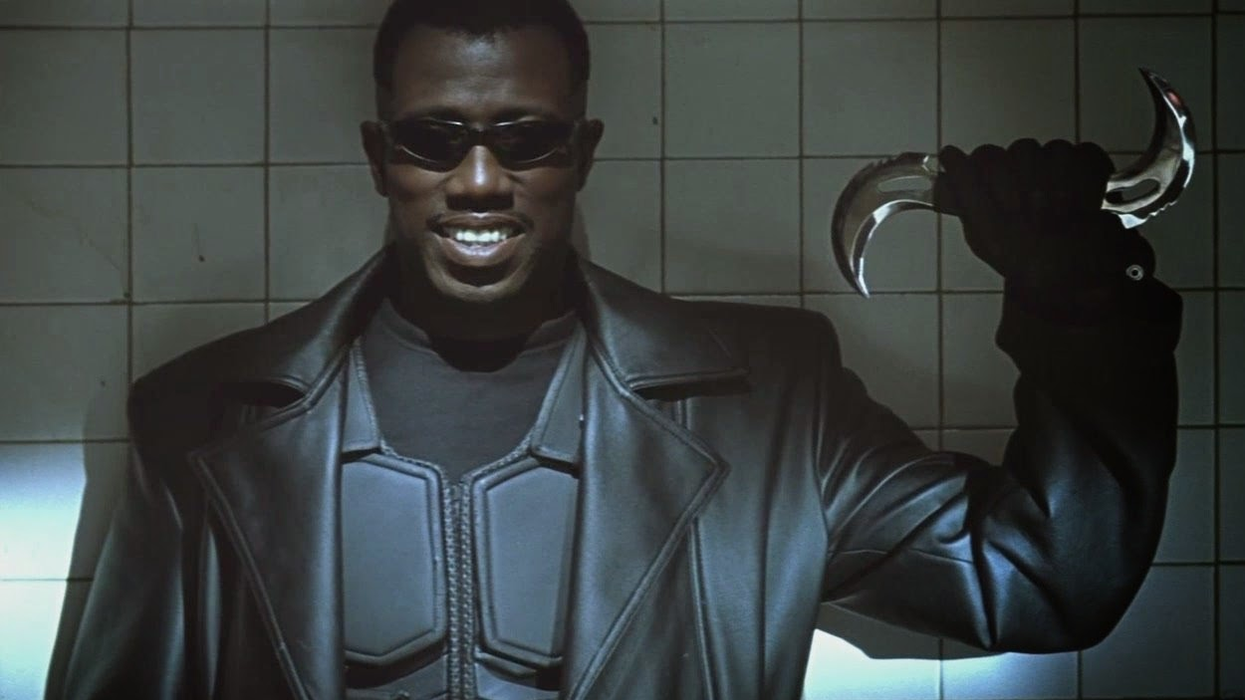What If Blade Was the One Who Saved Marvel?
Marvel's 22 films have comprised one of the most successful franchises ever. We give a lot of credit to Iron Man for making it happen, but what if it was actually "Blade"?

It's hard to believe, but DC Comics ruled the box office for much of the 20th Century. But it squandered all the good hope Batman and Superman movies had with Batman & Robin. Things were dismal for superheroes at the box office and no one expected Marvel to make any splashes. Their only foray into the fray, Howard the Duck, wasn't just a flop, it put the entire company on ice. The studio was bankrupt. It was licensing characters. They needed a bailout.
Enter Blade, a movie no one cared about.
Today we'll look at how Blade changed the fate of the Marvel universe and made the superhero genre viable at the box office again.
Where did Blade come from?
Blade was the first film packaged and licensed by Marvel Studios. It was a character New Line tried to put onto screens as a campy goofball, but the fear of a Batman & Robin fiasco and a relatively small budget allowed the development team to work on something a lot grittier. New screenwriter and comic fanatic, David Goyer, was allowed to write an R-rated movie that die-hard comic fans had been denied their entire lives.
At the time, the movie felt fresh and found an audience dying for action, comedy, and diversity.
How much money did Blade make?
According to Box Office Mojo, Blade made $131,183,530 at the worldwide box office. This was incredibly unexpected. It was a C-level character, a B-level star, and a relatively unknown director in Stephen Norrington behind the camera. But Blade had charisma thanks to Wesley Snipes' performance and David S. Goyer's script.
Wanna know something crazy? Marvel only made around 25K from Blade, but they learned that people still cared about Marvel characters. And that meant $$$$$.
Blade's success was HUGE for Marvel Studios. They began to sell off The X-Men, Spider-Man, and Fantastic Four, and successfully found a way to get back on their feet. These movie franchises made money for other studios.
This influx of cash let them rearrange the way they did business, and find the desire to make their own actual money. It would take years, but an executive finally got into Marvel's ear and told them that if they made the movies themselves they retain 100% of the profits. This desire permeated through the industry, and when Disney purchased Marvel, they hired Kevin Feige, who shared their intention.
Make movies, build a world, and keep the cash.
22 films later and the rest is history...thanks to Blade!
What's next? Learn how Game of Thrones created the Battle of Winterfell!
Look, by now you're used to Game of Thrones defying anything we've ever seen on television before. They've had battles in Castle Black, in Hardhome, at Slaver's Bay, and certainly in King's Landing. But the Battle of Winterfell had to be different. In an episode titled "The Long Night," after some events that happened thousands of years prior with the White Walkers, director Miguel Sapochnik delivered a battle so massive that it took the longest extended shoot to capture it in all its glory.
Click the link to learn more!
Source: Insider











